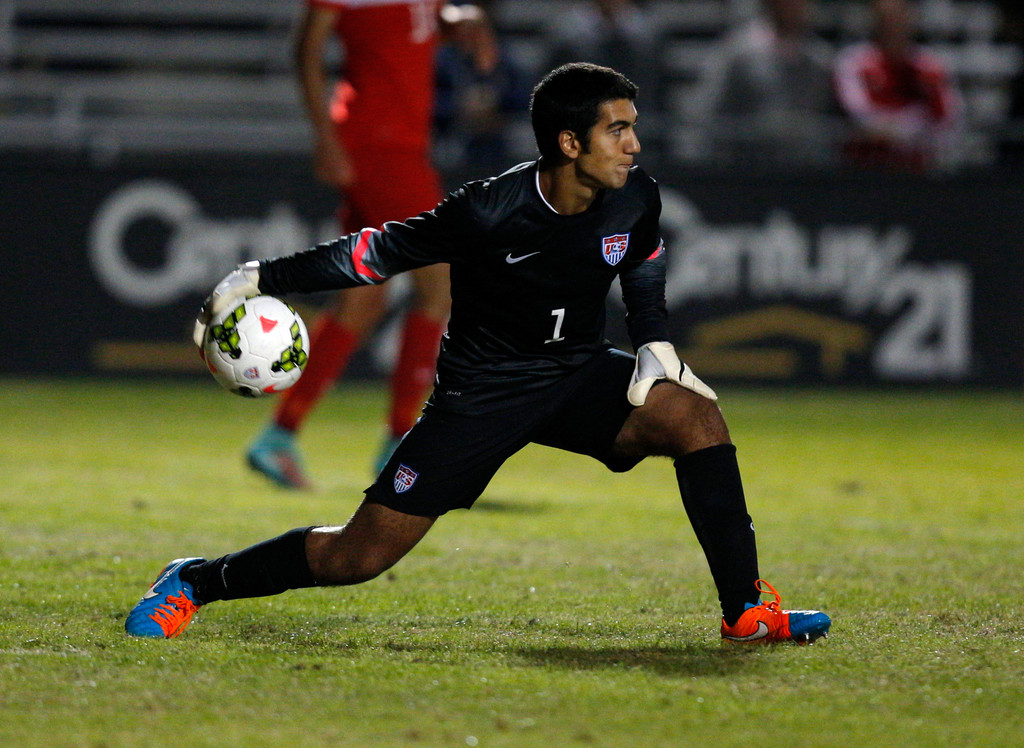Cover photo belongs to Kris Wright
We're less than a month away from MLS's next combine and the college draft looms soon after, which kicks off January 19th. JT Marcinkowski has already announced his decision to leave the college game early, signing a homegrown contract with San Jose. The main seniors to take note are Jeff Caldwell, Eric Dick, and Ben Lundgaard, all of which are receiving high praise from across the board. Fifteen goalkeepers were selected over the last two drafts so we can probably expect around seven or eight this year.
Seniors
1. Jeff Caldwell (Virginia) - 21
2. Eric Dick (Butler) - 23
3. Ben Lundgaard (Virginia Tech) - 22
4. Paul Christensen (Portland) - 21
5. Liam Priestley (England, Missouri State) - 22
6. Mike Novotny (Eastern Illinois) - 21
7. Andrew Shepherd (Western Michigan) - 23
8. Matt Mozynski (Campbell) - 22
9. Scott Levene (Connecticut) - 22
10. Michael Nelson (SMU) - 22
Bill says: At one point or another, I've rotated the top three goalkeepers as the number one. Lundgaard actually won Goalkeeper of the Year over Caldwell in the ACC and while Eric Dick has the frame and approach MLS coaches are looking for, Caldwell's quickness and ability to solve awkward situations puts him at number one for me. He's a little undersized for what coaches are looking for but his scrappiness has the potential to really push his career forward. Novotny (highlights) and Mozynski (highlights) don't hail from traditional powerhouses but MLS has been kind to goalkeepers from smaller schools so don't rule them out. Priestley and Shepherd have found success in their extracurriculars, playing with Tottenham's academy teams and making USOC appearances with the Michigan Bucks, respectively.
Juniors
1. JT Marcinkowski (Georgetown) - 20 **
2. Todd Morton (Delaware) - 22
3. Bobby Edwards (Monmouth) - 22
4. Nick Gardner (Denver) - 22
5. Rashid Nuhu (Ghana, Fordham) - 22
6. Briley Guarneri (Colorado Mesa) - 20
7. Dakota Havlick (Santa Clara) - 20
8. Jimmy Hague (Michigan State) - 22
9. Elliott Rubio (Utah Valley) - 21
10. Ximo Miralles (Spain, Clemson) - 21
Bill says: It's a shame Marcinkowski's collegiate career ended on an own goal in overtime but the newest San Jose Earthquake has his mind on bigger things now. Nuhu, who has some of the best distribution in college soccer, was a large part of Fordham's Cinderella run this year, even converting a penalty over Duke's Will Pulisic in the shootout. Guarneri is the first non-D1 goalkeeper to be included here but after a quick look at his ability to cover the goalmouth, it's easy to see there's a strong chance of a bright future ahead of him. Havlick and Rubio split time in goal with their schools and will look to nail down the starting spot for 2018, although both will have talented sophomores to outplay.
Sophomores
1. Dayne St. Clair (Canada, Maryland) - 20
2. Kevin Silva (UCLA) - 19
3. Parker Siegfried (Ohio State) - 20
4. Jimmy Slayton (Hartford) - 20
5. Andreu Cases Mundet (Spain, Wake Forest) - 20
6. Andrew Verdi (Michigan) - 19
7. Drake Callender (California) - 20
8. Aron Runarsson (Iceland, Vermont) - 22
9. Mertcan Akar (Germany, Old Dominion) - 21
10. Elliot Panicco (Charlotte) - 20
Bill says: If you look back at the preseason rankings, you won't see St. Clair's name but the Canadian burst onto the college scene this year, as displayed with his wonderful performance against Indiana. Silva drops to the number two slot after an up and down season with UCLA, which ended with one win and seventeen goals conceded in the last seven games of the season. The USYNT product certainly has the talent to go to the next level but needs to find the consistency to get there first. Siegfried (Columbus), Verdi (Philadelphia), and Callender (San Jose) all have homegrown possibilities, although Columbus' future has been up in the air to say the least.
Freshmen
1. Will Pulisic (Duke) - 19
2. Chase Vosvick (Loyola Maryland) - 19
3. Alec Smir (North Carolina) - 18
4. Drew Romig (North Carolina) - 19
5. Noah Heim (Marquette) - 20
6. Gage Rogers (Oregon State) - 18
7. Ben Hale (Furman) - 19
8. Joe Wheelwright (Utah Valley) - 21
9. Andrew Pannenberg (Wake Forest) - 19
10. Trey Muse (Indiana) - 18
Bill says: Perhaps the most stinging finish to a season was Pulisic's, who had a very strong freshman year until a trickling ball slipped through his hands with less than four minutes against Fordham, forcing overtime and then penalties. But there's a reason Pulisic was with the U20s and Dortmund's youth program so don't expect this to derail Pulisic's development. Vosick has been a real joy to watch in goal as the freshman goalkeeper has shown no signs of being overwhelmed by the competition. North Carolina currently has two top goalkeepers on their squad and will have a tough situation on their hands next fall, although Smir saw a bulk of the action this year. Heim, Rogers, Wheelwright, and Pannenberg each split time this year but have the ability to take over a starting role in their respective programs.
Past Collegiate Goalkeeper Rankings
2014 (final)
2015 (preseason and final)
2016 (preseason and final)
2017 (preseason)

